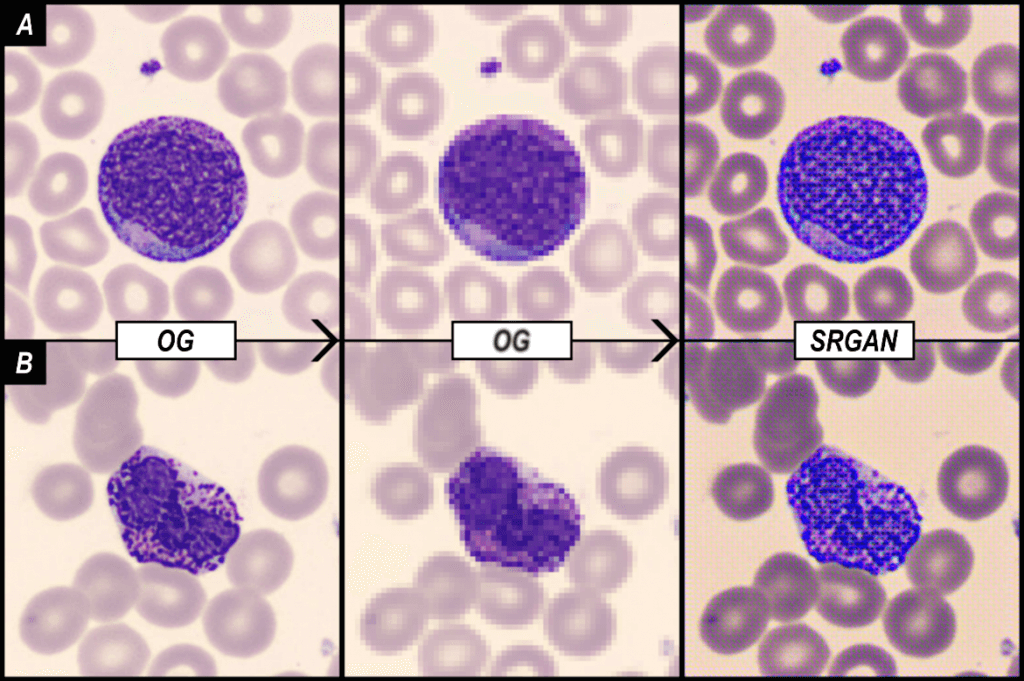2021
Bachelor’s thesis
on the topic:
“Improving the resolution of optical microscopy image data”
Mario Baars
Artificial intelligences are non-biological entities created by humans in computer form with limitless application potential, which are designed to learn from their experience on the basis of frequently repeated process execution of abstract concepts. Ideally, the system will develop a general predictive capability for unknown, multidimensional data sets. However, the generalization of complex problems, e.g. with regard to object or speech recognition, requires considerable effort and enormous computing capacity.
The Super Resolution Generative Adversarial Network (SRGAN) is a novel deep learning method that enables the generation of photorealistic details with up to a 4-fold increase in resolution. Against this background, this bachelor’s thesis set itself the goal of gaining an empirical understanding of the SRGAN. To this end, the increase in image quality applicable to optical microscopy and the computing capacity and training duration required for this purpose when adapting the parameter and training data set combinations were examined. In parallel, the usability of the SRGAN under resource constriction was analyzed.
Even if an equally high level of detail reproduction was not achieved compared to other scientific publications, the image size variation provided a decisive indication. Consequently, increasing the dimensions of training images seemed to be one of the most relevant key factors for achieving the best possible results. Hardware solutions and more specific model modifications were proposed to reduce computing times and loads.

